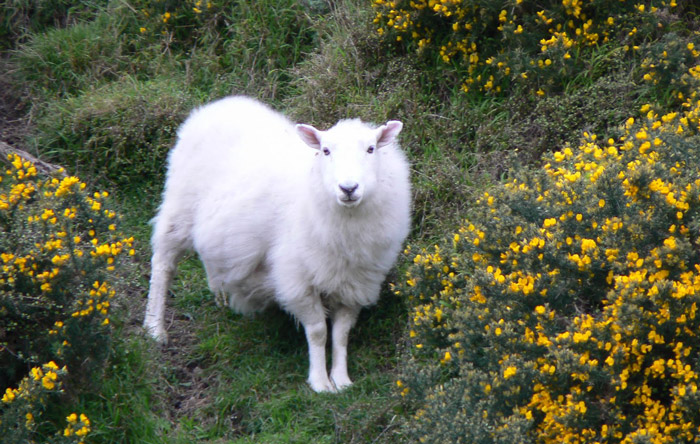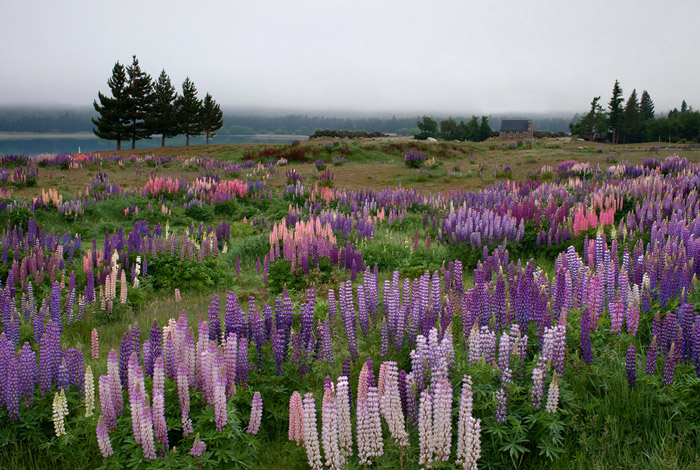Lupin and Gorse
Mar 5, 2014
 Lupin–from North America–and gorse–from Europe–are valued plants in much of the northern hemisphere. They were intentionally imported into New Zealand, lupin as a showy garden flower, gorse as a golden-blooming hedgerow plant to help farmers establish the boundaries of their pastures.
Lupin–from North America–and gorse–from Europe–are valued plants in much of the northern hemisphere. They were intentionally imported into New Zealand, lupin as a showy garden flower, gorse as a golden-blooming hedgerow plant to help farmers establish the boundaries of their pastures.
Both plants grew well in New Zealand and quickly became naturalized, spreading across much of the countryside, crowding out native bush, reducing habitat for native animals, and eventually finding themselves on the official registry of invasive species and noxious weeds.
Gorse is much the worse offender, now occupying 5 percent of New Zealand's land area and virtually impossible to eradicate. In Europe, gorse thickets are functional living fences around fields and pastures. The hedgerows break up areas of agricultural monoculture, providing habitat for wild birds and other native critters, and the thorny branches help farmers keep "wild" animals out of the fields and grazing animals in place. In New Zealand, however, gorse jumps right out of any hedgerows, displaces both native plants and cultivated crops, and swallows up all the open land thereabouts, till there's no grass left for the sheep and cattle. In just a few years, a gorse infestation can reduce pastureland and cropland to worthless, thorny scrub that is highly prone to catching fire.
Gorse seeds survive for many years in the soil near their parent plants. If the plants are pulled out or killed, the seeds immediately germinate in the disturbed soil and quickly, vigorously, happily replace whatever gorse has been laboriously removed.
Lupin too, is happy in its adopted New Zealand home (even though Kiwis drop the "e" that Americans just know belongs at the end of the plant's name). The lupin species that has made itself at home in so much of the country is Russell lupin, native to western North America and noted for the range of color on its spectacular flower spikes. Russell lupin likes conditions in New Zealand so well it has learned to thrive there even in places without soil, such as in the wide open gravel beds of the South Island's famed braided rivers.
Braided rivers are actually a rare kind of habitat, found in Alaska, western Canada, New Zealand's South Island, and very few other places. They flow steeply down from rapidly eroding mountains, carrying lots of sediment but not much water except during spring snowmelt, when the gravel is scoured clean. During times of low water, shallow streams and pools meander through the gravel, habitat for rare birds and fish. But when lupin colonize a braided river, the dense mats of their roots and stems trap sediment, choking off the riverwater, pinching its flow into relatively deep, narrow, fast-flowing channels that native fish and birds can't survive in.
Lupin spreads across a braided riverbed at the rate of about two meters a year. And the riverwater washes the lupin seeds downstream, to begin new colonies.
The photo at the top of this posting shows both lupin and gorse becoming established at the edge of a braided river near Arthur Pass.
Photo 1 below: Gorse has conquered the hillside at left in the Taieri Gorge west of Dunedin and is spreading to still-pastoral hillsides in the photo's background.
Photo 2: A sheep picks its way between thorny gorse bushes in a pasture with little grass left to eat.
Photo 3: Beautiful lupin grows dreamily in the highlands around Lake Tekapo.
Possible error message: We are decidedly non-expert in the art and science of plant identification. What we claim is gorse in the photos here may actually be one or more of several vaguely gorse-like species, perhaps Scotch broom, which is also an invasive noxious weed, or perhaps a native Kiwi type of broom, which is not considered weedy at all because it keeps to its place in the ecological scheme of things.


